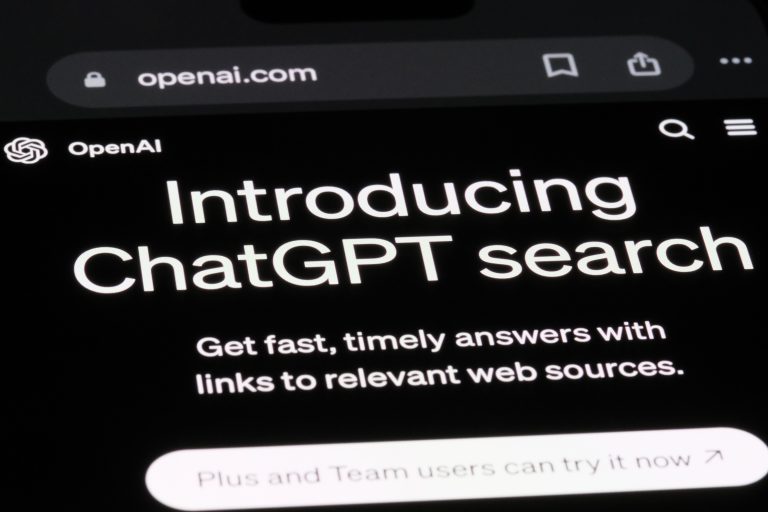By Laurie Laizure

When actor Timothée Chalamet appeared on Jimmy Kimmel’s late-night show and made an offhand remark “I just ChatGPT-ed a recipe,” the audience laughed, but beneath the humor was a profound shift: ChatGPT had become a verb.
That moment signaled a new era in digital behavior. People were no longer just “Googling” for answers; they were turning to conversational Al for help with everything from recipes to home improvement ideas.
This shift didn’t just affect how people found dinner inspiration – it began reshaping how consumers discovered professional services, including architectural, interior and technology design.
The traditional way clients discovered designers was linear. A homeowner might search “best interior designer in Philadelphia” or “residential architecture in San Diego” or “smart home professionals in Napa County”, click through links, and read portfolios. But that’s no longer how it works. Instead, consumers are typing full questions into AI tools, asking for style advice, space planning solutions, and recommendations that used to live solely on design-build professional’s websites and blogs. This shift away from keyword search toward conversational prompts has significant implications. Those who choose to adapt will stay visible. The rest will slowly disappear from the digital conversation.
This evolution is already impacting the way design-build firms get discovered. As reported in Forbes, businesses that fail to optimize for AI-generated content have seen double-digit drops in site traffic. That’s because AI tools don’t behave like search engines. They don’t rely heavily on backlinks. They don’t weigh keyword repetition. They look for natural language, trustworthy answers, and well-structured content that mimics human conversation. And when they find it, they may summarize or quote it, without requiring the user to ever click through to your site.

The rise of what marketers are now calling “generative engine optimization” is not theory. It’s happening in real time. For specialized small businesses within the design-build space it means writing differently, organizing differently, and showing up in new places. What worked five years ago – SEO-heavy blogs written around generic search phrases – isn’t what will land you in a ChatGPT answer today. What matters now is clarity, authority, structure and authenticity.
Some designers are already ahead of the curve. Shannon Ggem, a California-based interior designer, shared her experience with Business of Home after experimenting with ChatGPT to streamline her blogging process. “I can tell it, ‘Write a blog from Shannon Ggem about biophilia in the kitchen,’ and it’ll spit out a whole thing for me using my very own voice,” she said. For her, it was a breakthrough. Blogging had always been important for visibility, but it took time and energy away from client work. With AI, she was able to keep content flowing without sacrificing her tone or values. She still edits everything, of course, but the process is faster, more focused, and results in content that clients and AI alike can understand and appreciate.
Another designer told Business of Home that she used ChatGPT to brainstorm blog ideas based on real-world concerns her clients face, like nursery safety or small-space solutions. Instead of guessing what people might search for, she focused on what they were likely to ask aloud: “How can I create a calming nursery with no toxic materials?” or “What’s the safest layout for a toddler’s room?” And that’s exactly what AI tools are built to engage with.

These changes don’t just affect how you write, but how your site is built. AI needs content that is easy to understand structurally. Schema markup (small bits of code that label different parts of your website) helps AI recognize what’s a testimonial, what’s a portfolio, what’s a service area. The days of just uploading a photo with no alt text or vague labels are over. Design professionals who want their work to show up in AI-powered summaries must think like a machine, without losing their humanity.
There’s another piece to this puzzle: mentions. In the old SEO world, backlinks were everything. But now, AI tools are trained to look for patterns in language and mentions across the internet. If your name keeps popping up in articles, forums, social media, and client testimonials, AI recognizes you as a trusted source, even if there’s no hyperlink. Designers who are active in the community, who speak on panels, who collaborate with builders and brands, are more likely to show up in AI responses simply because they’re part of the conversation.
This is where community support becomes critical. Interior Design Community, which supports over 100,000 designers worldwide, is leading the charge in helping designers navigate this shift. “We plan to educate designers on the best use of AI to increase productivity and give them back time,” says the IDC team. “Interior Design Community is prioritizing advancements in technology to build tools and resources for the design community.”
Rather than resisting the changes AI is bringing, IDC sees an opportunity to build a smarter, more streamlined business model for designers. That includes not only training and resources but also guidance on how to avoid common pitfalls when using AI to generate content.

One of the most important cautions is to avoid what experts call “AI tells.” When using ChatGPT or other tools to create blog content, designers should be aware that certain phrasing patterns immediately signal automation. Using phrases like “in conclusion,” relying heavily on em dashes, or adding emojis to professional blogs are all red flags. These may seem minor, but they can diminish trust and make your content feel generic. AI can be a powerful assistant, but it’s not a replacement for your voice. The best content will still come from your unique perspective, just with a little help behind the scenes.
There’s also a visual dimension to this evolution. AI is getting better at recognizing and analyzing images. Tools like Google Lens and Pinterest Lens allow users to search by photo, not just words. This means your project images need to be clear, well-labeled, and formatted for machine readability. The way you name your files, write your captions, and tag your alt text now directly affects how likely your work is to show up in a visual search or AI-generated inspiration board.
Firms that are embracing this change are already seeing results. A boutique studio in the Northeast recently overhauled its website with new schema, refreshed meta descriptions, and blog content written in a client-friendly tone. Within a few months, they saw an increase in client inquiries originating from AI platforms like ChatGPT and Perplexity. Instead of relying solely on Google or Instagram, they started showing up in the places where conversations begin.
The old markers of trust: domain age, link quantity, and keyword repetition are giving way to newer, more fluid signals. AI cares about clarity, usefulness, originality and reputation. And those are areas where independent designers can thrive.
As the technology matures, the playing field is being leveled. A single thoughtful blog post, if structured well and shared widely, can carry more weight in AI search than a massive content farm packed with recycled listicles. That’s a rare window of opportunity in a digital world that usually favors big budgets and high ad spend.
The design-build professionals who succeed in this era will be the ones who show up, not just online, but in the ongoing conversation about design, technology and the client experience. They’ll blog smarter, structure better, and engage more thoughtfully with both people and platforms.
The search revolution is here. And like any design trend, it rewards those who see the big picture and make it their own.









